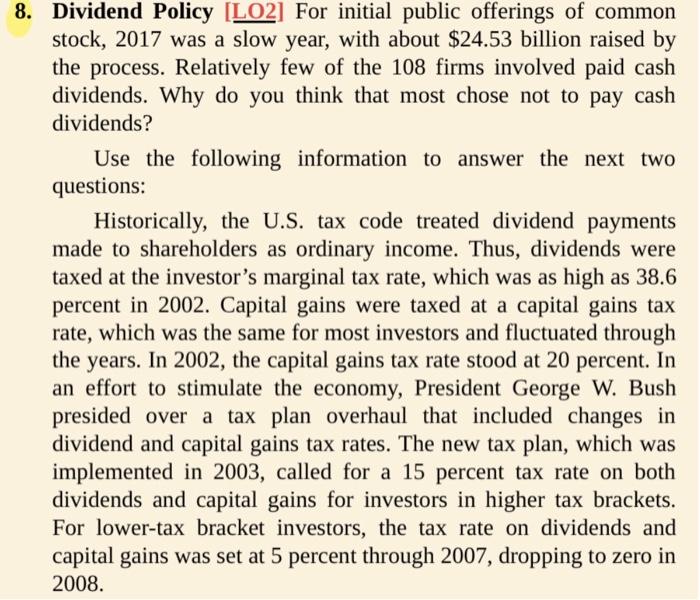Answered step by step
Verified Expert Solution
Question
1 Approved Answer
8. Dividend Policy [LO2] For initial public offerings of common stock, 2017 was a slow year, with about $24.53 billion raised by the process. Relatively
8. Dividend Policy [LO2] For initial public offerings of common stock, 2017 was a slow year, with about $24.53 billion raised by the process. Relatively few of the 108 firms involved paid cash dividends. Why do you think that most chose not to pay cash dividends? Use the following information to answer the next two questions: Historically, the U.S. tax code treated dividend payments made to shareholders as ordinary income. Thus, dividends were taxed at the investor's marginal tax rate, which was as high as 38.6 percent in 2002. Capital gains were taxed at a capital gains tax rate, which was the same for most investors and fluctuated through the years. In 2002, the capital gains tax rate stood at 20 percent. In an effort to stimulate the economy, President George W. Bush presided over a tax plan overhaul that included changes in dividend and capital gains tax rates. The new tax plan, which was implemented in 2003, called for a 15 percent tax rate on both dividends and capital gains for investors in higher tax brackets. For lower-tax bracket investors, the tax rate on dividends and capital gains was set at 5 percent through 2007, dropping to zero in 2008.

Step by Step Solution
There are 3 Steps involved in it
Step: 1

Get Instant Access to Expert-Tailored Solutions
See step-by-step solutions with expert insights and AI powered tools for academic success
Step: 2

Step: 3

Ace Your Homework with AI
Get the answers you need in no time with our AI-driven, step-by-step assistance
Get Started


